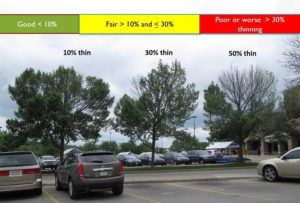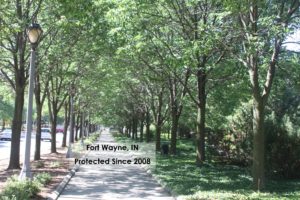Emerald ash borer is the most destructive insect pest to attack the North American forest. Its march through our country mobilized groups of concerned entomologists to find ways to keep ash trees alive. The latest guide to chemical control of emerald ash borer uses their collective wisdom to explain
- How to use insecticides to effectively and consistently protect even the largest of ash trees from emerald ash borer.
- Why irrigation is necessary during drought to get protective chemicals in the tree.
- How an injections of emamectin benzoate can provide up to 3 years of control.
- When soil or trunk applied insecticides are viable alternatives.
- When a tree is too heavily damaged to be saved.
- Not every ash tree is worth protecting. Treating ash trees in home landscapes that have lost < 30% of their canopy gives you the best chance of saving a tree.
- Cities like Fort Wayne, IN have been able to keep its favorite ash trees alive even after some trees were already lost to EAB.
Our newly designed management page for EAB can help you put this information on chemical control to use on your property or in your city.
In the absence of protection your ash tree will be killed by EAB. Ash trees that have been attacked by EAB can rapidly become brittle and dangerous to prune or remove. We strongly recommend that you hire a professional to remove or prune ash trees. The link below is a guide to help professionals safely remove ash trees.
Helpful YouTube Links
Staging and Managing Your Cities Emerald Ash Borer Infestation (4 mins)
Practical EAB Management (1 hour)
Dead Ash Danger: A Professional Guide to Pruning and Removal Techniques (1 hour)

